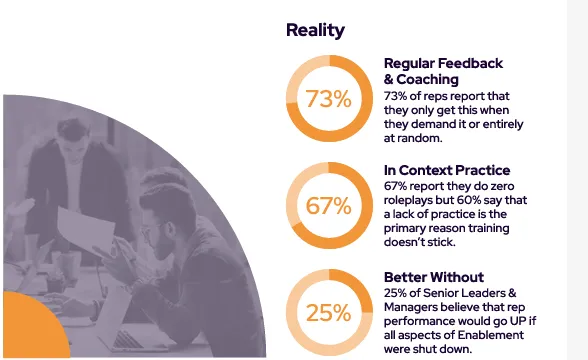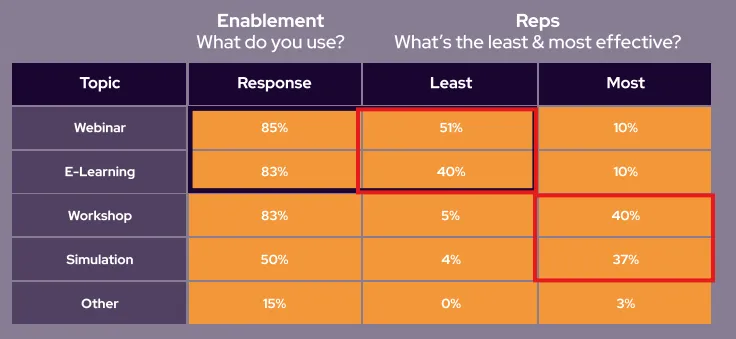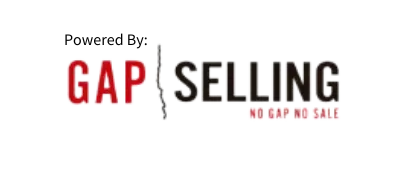Stop Managing, Start Coaching: What Happens When SDR Leaders Are Not in the Trenches
Let’s cut to the chase—too many SDR leaders are setting lofty goals but dropping the ball when it comes to actually helping their teams achieve them. If you’re in a leadership role, ask yourself: Are you really coaching your reps, or are you just managing from a distance?
Here’s the hard truth: According to a recent GTM Training Impact Survey by Replicate Labs a staggering 73% of reps surveyed said that they only get feedback and coaching when they demand it. And it gets worse—only 21% of sales reps feel they receive the coaching they need to succeed. If you're not stepping in to guide your team, you're leaving them to figure things out on their own, and that’s not leadership.

GTM TRAINING IMPACT SURVEY 2024 by Replicate Labs
The Reality of "Inspect What You Expect"
You might be setting lofty targets, but are you actually engaged in how your team is working towards those goals? It’s not just about the end result; it’s about the process. Maggie Maloney, Global Lead Strategic Account Development & Enablement at Televerde , took a bold step by scrapping the scripted questions her team used during discovery calls.
The outcome? Genuine conversations that build trust and reveal the real problems prospects are facing.
Maggie didn’t just abandon her team to this new approach. She was right there in the trenches, guiding them through the change. This is what real coaching looks like—getting involved and helping your team navigate the challenges they face.
The Go-To Coaching Method: Observe, Describe, Prescribe
To make coaching straightforward and effective, we stick to a a simple framework: Observe, Describe, Prescribe. Here’s how it works:
- Observe: Start by watching and listening to how your reps are handling their calls and interactions. Pay attention to what they’re doing well and where they could improve. The GTM survey found that reps who receive consistent feedback from their managers are 29% more likely to hit their targets. Observation is where that feedback starts.
- Describe: After you’ve observed, give them specific feedback. For example, if a rep skips over a prospect’s vague comment like, “We’re growing slower than last year,” you might say, “I noticed when the buyer mentioned slower growth, you didn’t dig deeper. That’s a missed opportunity to understand what's going on currently, their growth goals why not hitting them is important/impactful to the business.”
- Prescribe: Now, give them something actionable. You could suggest, “Next time a prospect says something like that, you want to respond with a question that will have the buyer dive deeper so you can uncover going on. I'd like you to practice right now aloud. Then you, the coach, restates what the buyer said (from above) and allows the seller to practice what you prescribed so they understand what behavior you are asking them to change.
Coaching Isn’t One-and-Done
Here’s the deal—coaching isn’t a one-time thing. It’s an ongoing process. According to the GTM Training Impact Survey, 53% of reps who receive regular coaching see an improvement in their sales performance. By using the Observe, Describe, Prescribe method, you ensure your feedback is always relevant and helps your reps continuously improve.
This approach also fosters a culture of curiosity. When reps aren’t tied to a script, they’re more likely to ask meaningful questions that get to the heart of what prospects need. This not only helps close more deals but also builds lasting relationships based on trust.
The caveat here is that you have to focus on ONE behavior at a time. Reps are not able to correct more than one or two behaviors at a time. Giving them a laundry list of things to improve upon usually doesn't work. Having them focus on honing one skill or one set of a behaviors at a time until they master it is key!
And as always - CELEBRATE their efforts! It takes a lot to be vulnerable as a rep and to be exposed for areas that you haven't yet mastered. Creating and fostering an environment where everyone learns together in a safe place is key!
Takeaways for SDR Leaders
- Be Present: Don’t just set goals—get involved in how your team is working to achieve them. Your presence and engagement can make a significant difference in your team’s performance.
- Active Coaching: Use the Observe, Describe, Prescribe method to give feedback that helps your reps improve continuously. Regular coaching is linked to higher sales performance - yet so many leaders are SKIPPING THIS PART!
- Encourage Curiosity: It's time to move beyond the script. Buyer's hate them and sellers sound like robots. The issue is - we are not doing REAL play in the moment which teaches our reps how to be agile, how to listen and to respond to what they heard - vs. getting their next questions ready. The more you lean into scrips for discovery, the worst the buyer's experience is. The LIFT becomes on sales leadership and front line managers to practice in real time. If you want examples of HOW to do this, see the last write up I did on how to turn Sales Call Reviews into Popcorn Moments.
- Keep It Going: Coaching is an ongoing process. This means that the onus is on you to have a process in place and not deviate from it. Go back and read the stats - they do not lie. So many teams are skipping role play and coaching because it's tough, it's time consuming and no one knows WHAT to coach to. When you know the business problems your company solves for you can coach to how well your team gathers buyer input data during discovery, and then add on from there. Without those business problems you end up coaching by call vs. by the common language established through the sales methodology.
The difference between a team that flounders and is to to "just add more pipeline" and one that crushes goals is how well they’re coached.
So my question to you is, if you are not coaching, why?
And if you are one of the teams that has no common language, no sales methodology in place - think twice before you lean into e-learning or webinars. See below on what REPS believe to be the MOST effective way to train:

GTM TRAINING IMPACT SURVEY 2024 by Replicate Labs
Ps. This is why we train via workshops and simulations (introduce a concept and role play it out and also spend quite a bit of time WITH the team on role play, call coaching and deal review on real opportunities).
Training does stick unless it's sticky. Coaching is exactly the same.
For more insights on effective coaching, check out the podcast episode with Maggie Maloney titled: In the Sales Leadership Trenches: Ditch the BDR Checklist and Start Leading Through Active Coaching Info. It’s packed with advice that can help you ease into coaching your team on how to stay agile during discovery!






